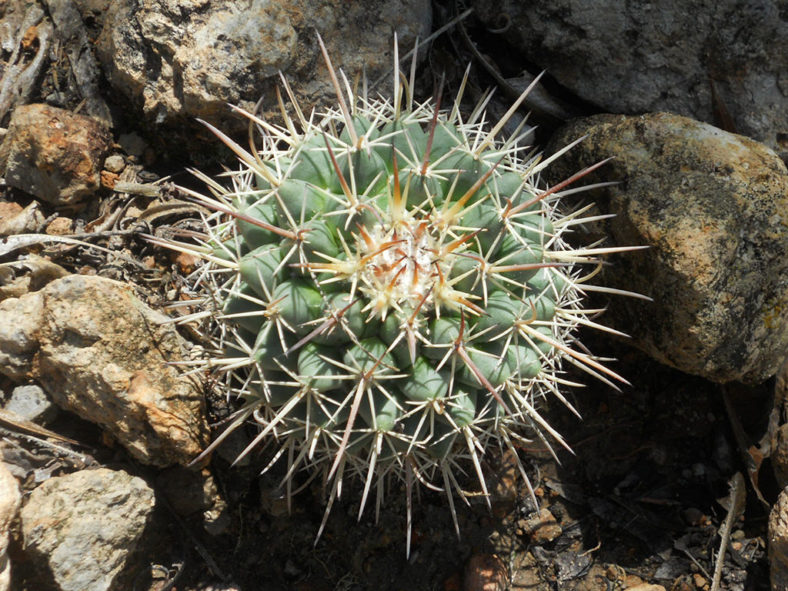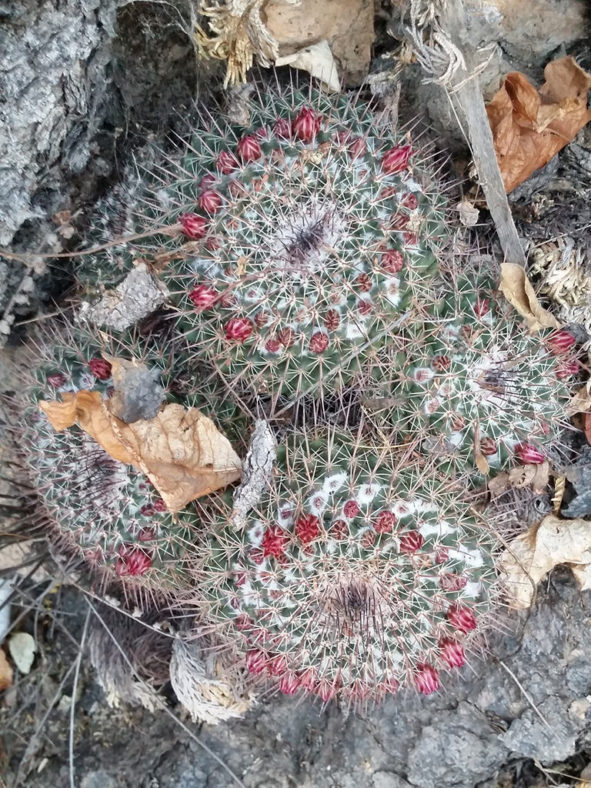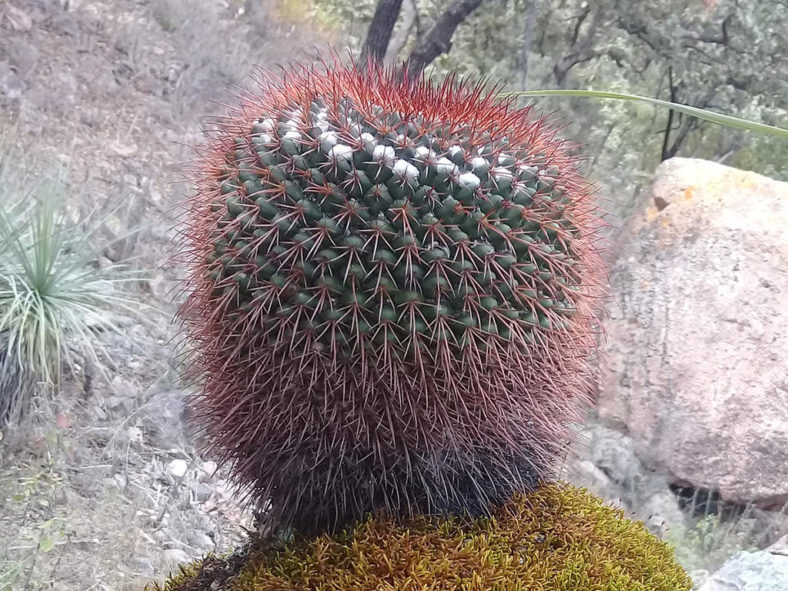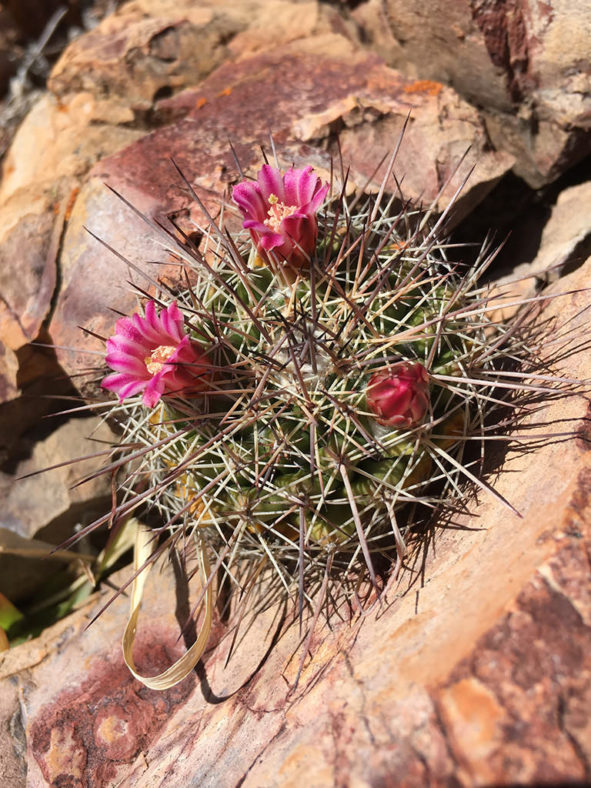Scientific Name
Mammillaria wagneriana Boed.
Synonym(s)
Mammillaria antesbergeriana, Mammillaria crassa, Neomammillaria wagneriana
Scientific Classification
Family: Cactaceae
Subfamily: Cactoideae
Tribe: Cacteae
Subtribe: Cactinae
Genus: Mammillaria
Etymology
The specific epithet "wagneriana (wag-ner-ee-AH-nuh)" honors the eminent American botanist Warren H. Wagner Jr. (1920–2000).
Origin
Mammillaria wagneriana is native to Mexico. It grows on rocky slopes in open oak woodlands in Zacatecas, Jalisco, and Aguascalientes at elevations between 1,700 to 2,300 feet (5,580 to 7,550 m).
Description
Mammillaria wagneriana is a small cactus with a spherical, usually solitary stem with prominent tubercles and a slightly depressed apex. The stem is dark green and can grow up to 6 inches (15 cm) tall and 8 inches (20 cm) in diameter. The tubercles are pyramidal, quadrangular, or almost conical. They are spirally arranged, have dense white wool in the axils, and are tipped with clusters of 2 to 4 central and 6 to 10 radial spines. The central spines are straight or twisted, reddish to almost black, becoming gray with age, and can grow up to 1.2 inches (3 cm) long, while the radial spines are whitish-yellow and can grow up to 0.8 inches (2 cm) long.
The flowers are white with pale pink midveins and greenish-yellow stigma. They can reach up to 0.8 inches (2 cm) in diameter and appear in spring. The fruits are red, club-shaped, and contain brown seeds.

How to Grow and Care for Mammillaria wagneriana
Light: Plant this cactus in an area of your garden that receives 4 hours of direct sunlight daily. If you are growing M. wagneriana indoors, place it near the brightest window in your home or office to ensure your cactus gets enough light. Place the pot on the balcony or in the garden for extra light from spring to fall if possible.
Soil: M. wagneriana requires a soil mix that provides root aeration and good drainage, whether grown outdoors or indoors. Use commercial cactus potting mixes or create your own potting mix.
Hardiness: This cactus is heat tolerant but not a cold-hardy plant. M. wagneriana can withstand temperatures as low as 25 to 50 °F (-3.9 to 10 °C), USDA hardiness zones 9b to 11b.
Watering: From spring to fall, water deeply and wait for the soil to dry out before watering again. Never let the pot sit in water. Suspend watering in the winter.
Fertilizing: M. wagneriana can benefit from fertilizing during the growing season. Apply a water-soluble fertilizer for cacti and other succulents. Suspend feeding during the winter when the plant goes dormant.
Repotting: Repot every two or three years into a slightly larger pot. The best time to repot your M. wagneriana is late winter or early spring, but the repotting process can be done almost any time of the year.
Propagation: There are two easy ways to propagate M. wagneriana: by seeds or by dividing offsets. The best time to remove offsets is in spring and summer. Sow the seeds in late spring or summer.
Learn more at How to Grow and Care for Mammillaria.
Toxicity of Mammillaria wagneriana
M. wagneriana is considered non-toxic to both humans and pets.
Links
- Back to genus Mammillaria
- Succupedia: Browse succulents by Scientific Name, Common Name, Genus, Family, USDA Hardiness Zone, Origin, or cacti by Genus
Photo Gallery
Click on a photo to see a larger version.


